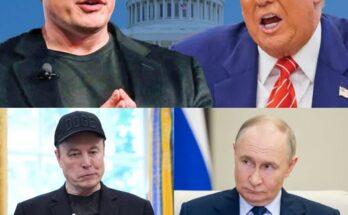The trade policies implemented during President Donald Trump’s administration, particularly the imposition of tariffs on Chinese goods, have been a subject of extensive debate among economists, policymakers, and international trade experts. While the intention behind these tariffs was to protect American industries and reduce the trade deficit with China, various analyses suggest that the outcomes may not have aligned with these objectives. Some experts argue that China has managed to navigate these tariffs effectively, potentially benefiting from the situation.
The Rationale Behind Trump’s Tariff Policy
President Trump’s administration initiated a series of tariffs on Chinese imports, aiming to address several concerns:
- Trade Deficit Reduction: The U.S. had a significant trade deficit with China, importing more than it exported. The tariffs aimed to make Chinese goods more expensive, encouraging consumers to buy American products and thus reduce the deficit.
- Protection of Domestic Industries: By imposing tariffs, the administration sought to protect key industries, such as steel and aluminum, from what it perceived as unfair competition due to China’s lower production costs and alleged subsidies.
- Intellectual Property Rights: There were longstanding concerns about China’s practices related to intellectual property theft and forced technology transfers. The tariffs were also a strategic move to pressure China into reforming these practices.
Economic Expert Perspectives
Many economists have critiqued the effectiveness of these tariffs:
- Consumer Impact: Iain Murray highlighted that tariffs often result in higher prices for consumers, as importers pass on the increased costs. This can lead to reduced consumer spending and overall economic slowdown.
- Employment Effects: While tariffs aim to protect domestic jobs, they can have the opposite effect. For instance, the 2018 steel and aluminum tariffs led to higher input costs for U.S. manufacturers, resulting in job losses in industries reliant on these materials.
- Diplomatic Relations: Tariffs can strain relationships with allies and lead to retaliatory measures. This tit-for-tat escalation can harm global trade dynamics and isolate the imposing country.
China’s Response and Adaptation
China’s reaction to the U.S. tariffs showcased a blend of strategic retaliation and adaptation:
- Retaliatory Tariffs: China imposed its own set of tariffs on U.S. goods, targeting industries that would create political pressure within the U.S., such as agriculture.
- Diversifying Trade Partnerships: Facing U.S. tariffs, China sought to strengthen trade relations with other regions, notably the European Union. Chinese diplomats engaged in charm offensives to woo EU leaders, emphasizing cooperation and mutual benefit, especially as the EU faced strained relations with the U.S. under Trump’s policies.
- Currency Strategy: To counteract the impact of tariffs, China allowed its currency, the yuan, to depreciate. A weaker yuan made Chinese exports cheaper, offsetting some of the tariff-induced price increases.
Unintended Consequences for the U.S.
The tariffs led to several unforeseen challenges for the U.S.:
- Market Volatility: The uncertainty surrounding trade policies contributed to significant stock market fluctuations. Indices like the S&P 500 and Nasdaq experienced notable declines during tariff announcements, reflecting investor apprehension.
- Corporate Dilemmas: Companies like Walmart faced challenges in managing increased costs due to tariffs. Attempts to pressure Chinese suppliers to absorb these costs led to tensions, with Chinese officials warning of potential legal consequences.
- Trade Deficit: Contrary to the administration’s goals, the U.S. trade deficit reached a record $1.2 trillion in 2024, partly due to the overvalued dollar making American goods more expensive overseas.
Long-Term Implications
The long-term effects of the tariff policy have been complex:
- Global Supply Chains: Companies began reevaluating their supply chains to mitigate tariff impacts, leading to shifts in global manufacturing hubs. However, relocating production is costly and time-consuming.
- Trade Relations: The tariffs prompted countries to explore new trade agreements, sometimes excluding the U.S., potentially diminishing its influence in global trade discussions.
- Economic Theories: The situation reignited debates about protectionism versus free trade. Economists like Joseph Stiglitz have discussed the complexities of globalization, acknowledging that while some U.S. workers suffered due to global trade dynamics, reversing globalization could harm the U.S. economy more than benefit it.
Conclusion
While the Trump administration’s tariffs aimed to bolster the U.S. economy and address trade imbalances with China, the outcomes have been mixed. China’s strategic responses, coupled with unintended domestic consequences, suggest that the tariffs may not have achieved their intended goals. This scenario underscores the intricate nature of global trade and the challenges of implementing unilateral protectionist measures in an interconnected world.


